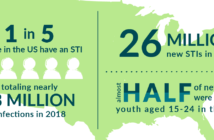[tribulant_slideshow gallery_id="102"] |
In today’s age, texting is becoming increasingly popular within the population. The Crisis Text Line has ingeniously taken advantage of this by implementing a crisis text line, in which people who are in dire need of help, have the access to a crisis counselor readily available.
The Crisis Text Line is a non-for-profit organization that offers a free 24/7 text line for people experiencing crises. The organization also announced that as of Mar. 1 2017, they have gained the ability to communicate with people through Facebook Messenger, as a result of the partnership formed with Facebook.
“We want to be wherever people are in crisis–text, Facebook Messenger–and we’ll continue to be on the leading edge of technology, supporting people everywhere they are,” said Nancy Lublin, Founder and CEO of Crisis Text Line and an active volunteer, according to one of their press releases.
Ideally, they are not just a suicide hotline, but they also provide much help for any type of crisis.
According to information provided on the Crisis Text Line’s website, they are able to reach a “traditionally underserved population”. In fact, 75 percent of their ‘texters’ are under the age of 25, and around 47 percent of their ‘texters’ do not identify as straight or heterosexual. Additionally, ‘texters’ range from a variety of ethnicities as 6 percent of their ‘texters’ identify as American Indian, and 14 percent are reported as being Hispanic.
Lublin also found it mind blowing that 10 percent of their ‘texters’ are under age 13, and another fascinating fact was that 65 percent of ‘texters’ say that they have shared something with the hotline that they have never shared with someone else.
Bob Filbin, who is the Chief Data Scientist, stated that in over three years almost 29 million messages were received, and the text line got about one million messages per month, which amounts to over 600,000 conversations.
To serve ‘texters’ effectively, The Crisis Text Line had to develop an algorithm, to detect which text messages to reach first. Lublin stated that text messages are ranked based on severity, so texts containing the words “die”, “suicide”, and “kill”, for example, are placed higher in the queue, and are spoken to as soon as possible.
However, The Crisis Text Line noted on their website that there are a thousand more words that are higher risk than “die”, “overdose”, and “suicide”. She noted that words, such as “ibuprofen”, “Advil”, “Tylenol”, and “aspirin” suggest that “someone doesn’t just have the ideation and the plan, but they also have the means, and they have the timing, because it’s right there in arms reach.”
“The other thing that is fascinating is the unhappy face, crying emoji turns out to be four times more likely in us having to trigger an active rescue than the word suicide,” said Lubin.
Hira Raja, who is one of the crisis counselor trainers, talked about what occurs when texters are at a high risk.
“When a texter is at imminent risk, and they also are unwilling to come up with a safety plan, then that’s when an active rescue is initiated and that’s when emergency services are called,” said Raja on their website.
It should be noted, however, that the active rescue is not the goal of the Text Line, but they seek to de-escalate situations, bringing the ‘texter’ from a heated state of mind to one, which is cooler and calmer.
“It is the goal of the company to focus on empathy, as the crisis counsellors always aim to put themselves in the texters’ position”, according to Raja.
The Crisis Text Line also has an extension, Crisis Trends; This site publishes the Crisis Text Line’s updated data. In fact, of Apr. 15, 2017, information on the Crisis Trend website states that 35,026,307 messages have been exchanged since Aug. of 2013.
Here on campus, the counsellors are aware of The Crisis Text Line, and they strongly encourage those in need of help to seek it wherever possible. In an interview with The Lion’s Pride, the Director of Counselling Services, Mr. Lawson Jolly stated that the counsellors here on campus promote the use of this service as it is very professional, and it is almost always anonymous, unless there is a safety issue involved.
Similarly, Jolly, also stated that there are three therapist on campus who are always ready and willing to assist those in need, and there is also the ULifeline website, which is a great online resource for college students who are seeking help for their mental health. “ULifeline is a great site where students can take an online assessment about how they are doing, and it [the website]will give you suggestion or diagnosis. From there, you can make an appointment with us, so this resource is a step between anonymous and not anonymous.” said Mr. Lawson.
The counsellors at Saint Leo also strongly promote the use of the National Suicide Prevention Lifeline, which provides confidential support to those in need for free. The hotline, 1-800-273-TALK, is available 24/7, and is somewhat like the Text Crisis Line, but users have to call in instead. “They would also assess students’ safety and ensure they aren’t going to harm themselves,” said Mr. Jolly.
Students are strongly encouraged to utilize the resources available, and seek help when needed. Mr. Jolly noted that 1 in 4 students seek help from counselling services, and last year, 359 students came in for help. So far, it has been noted that students are their biggest referral source, and counselling services will continue to do their best with providing an excellent resources for Saint Leo students.





